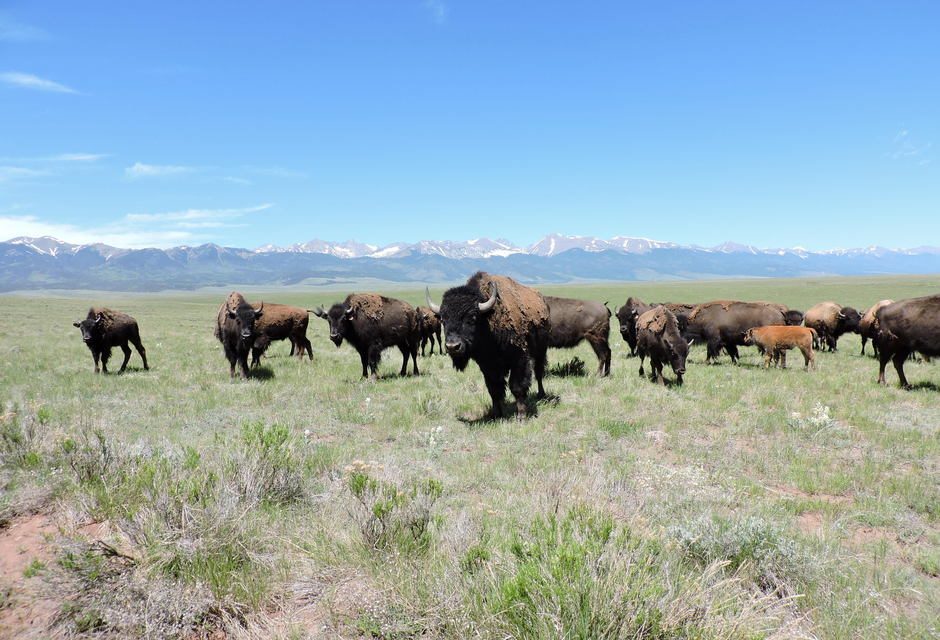 |
Buffalo at the Navajo-owe Wolf Springs Ranch. (Photo: Ranch Marketing Assn.)
|
Look at the banner photo on this blog, and you will see at lower right a bull buffalo (bison, if you prefer).
That pasture is part of a big ranch purchased in 2017 by the Navajo Nation. (Technically, Colorado Ranch Enterprise, Dept. of Fish & Wildlife, PO Box 1480, Window Rock). Think of it as the Kaliningrad of Dinétah.
Its previous owner, Tom Redmond of Aussie and Onesta hair-care products, started raising buffalo, and thus far, the Navajo Nation has continued on that path.
Last month, a friend was visiting from Australia, so I took her up to the upper Huerfano River drainage to see the ranch, hoping we would see some buffalo. You never know where they might be, but luck was with us, and half a dozen individuals were in that pasture, within passable binocular and camera range.
It's in our gene: we enjoy just watching large grazing animals. To borrow a phrase, they are "good to think about."
Meanwhile, up north, buffalo politics are "messy."
On the other side of Montana, at the
Blackfeet Reservation, Joe Kipp, chairperson of the Blackfeet Nation
Stock Growers Association, also has a longstanding connection to the
reintroduction effort. In the 1980s, he’d been involved with bringing
the first wild buffalo — surplus animals from Theodore Roosevelt
National Park in North Dakota — to the Blackfeet Reservation. These
days, he and his wife make the drive south to Yellowstone every winter
to hunt the animals; Kipp’s wife is diabetic, and the only meat she eats
is bison. (Compared to beef, bison has more protein and minerals, and
much less fat and cholesterol.)
Still, Kipp is unhappy with how the
tribe has managed its herd in an austere landscape where many make their
living raising cattle. Ranchers deal with ferocious wind storms, bitter
winters, crippling droughts: Business margins are tight. He’s heard
from plenty of disgruntled ranchers like Danny Barcus, who rent grazing
lands for their livestock — the current rate for a cow-calf pair is
around $40 a month — only to have the tribe’s buffalo break in and eat
the grass intended for their cattle. “It gets to be a sore point pretty
fast,” Kipp said.
Kipp worries what will happen now that bison are being considered for protection under the Endangered Species Act,
a move he fears would undermine his treaty hunting rights. He’s also
content with Yellowstone’s current management and doesn’t see the need
to expand the park’s herd. “People envision, ‘Oh, we want bison that are
running across the landscape like before,’” he said. “But we didn’t
have 50,000-pound trucks and trains running and cars and all these
things. It’s a beautiful concept, but I don’t think it’s based upon
reality.”
This spring, Kipp, Barcus, and other
Blackfeet cattle ranchers met with their tribal council and asked them
to make changes to the herd’s management. After years of frustration,
they felt the council had been receptive to their concerns, and this
summer, the tribe began a new culling program to manage its herd.
The whole article is "Bison’s Complicated Return: Growing herds in the Yellowstone area are adopting ancient migratory behavior causing logistical issues for ranchers and Montana state officials."
Worth a read. Good to think about.



